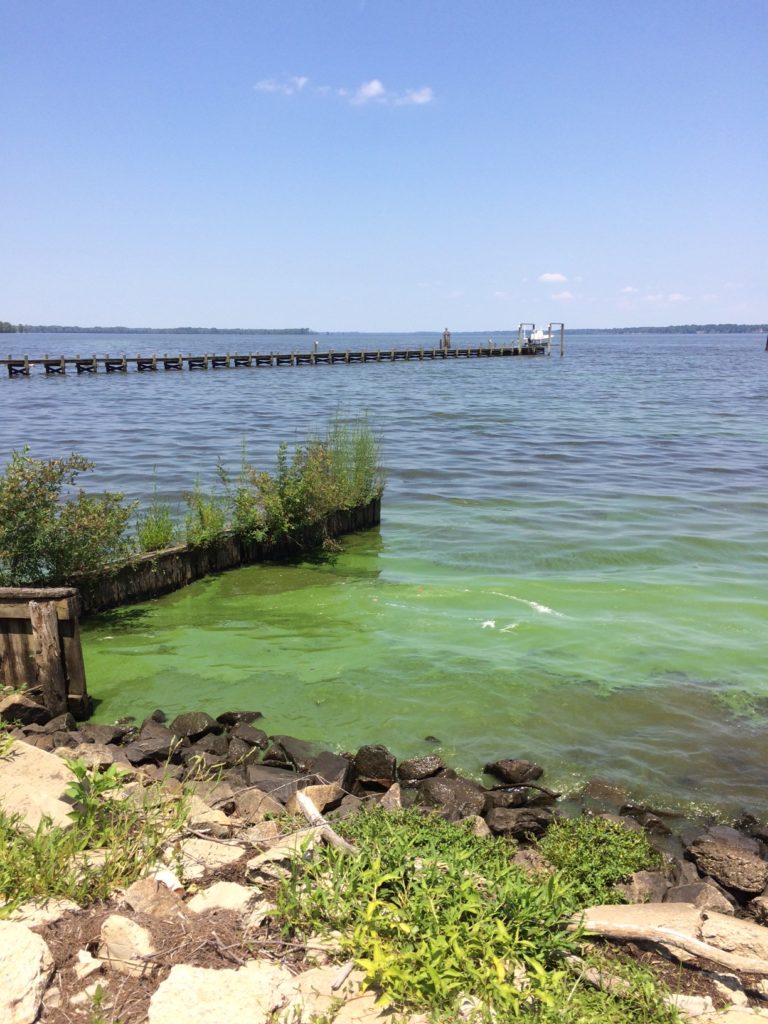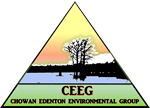Lesson Overview
This lesson focuses on student exploration with duckweed to compare and contrast abiotic requirements for aquatic plant (duckweed) and cyanobacteria growth in local waterways. Cyanobacteria morphology and role in the ecosystem will be emphasized with student participation in “The Great Heterocyst Count”.
This lesson is appropriate for grades 6th – 8th with class sizes of 30 or less. Lesson could be adapted for virtual learning with minimum materials, possibly picked up as a kit from school.
View the 5E Lesson plan
North Carolina Essential Standards

6.L.2. Ecosystems. Understand the flow of energy through ecosystems and the responses of populations to the biotic and abiotic factors in their environment.
6.L.2.3 Summarize how the abiotic factors (such as temperature, water, sunlight, and soil quality) of biomes (freshwater, marine, forest, grasslands, desert, Tundra) affect the ability of organisms to grow, survive and/or create their own food through photosynthesis.
7.L.1 Structures and Functions of Living Organisms. Understand the processes, structures and functions of living organisms that enable them to survive, reproduce and carry out the basic functions of life.
7.L.1.2 Compare the structures and functions of plant and animal cells, including major organelles (cell membrane, cell wall, nucleus, chloroplasts, mitochondria, and vacuoles).
8.E.1 Earth Systems, Structures and Processes. Understand the hydrosphere and the impact of humans on local systems and the effects of the hydrosphere on humans.
8.E.1.3 Predict the safety and potability of water supplies in North Carolina based on physical and biological factors, including: temperature, dissolved oxygen, pH, itrates and phosphates, turbidity, and bio-indicators
8.E.1.4 Conclude that the good health of humans requires: monitoring of the hydrosphere, water quality standards, methods of water treatment, maintaining safe water quality, and stewardship
8.L.1 Structures and Functions of Living Organisms. Understand the hazards caused by agents of diseases that affect living organisms.
8.L.1.1 Summarize the basic characteristics of viruses, bacteria, fungi and parasites relating to the spread, treatment and prevention of disease.
8.L.3. Ecosystems. Understand how organisms interact with and respond to the biotic and abiotic components of their environment.
8.L.3.1. Explain how factors such as food, water, shelter, and space affect populations in an ecosystem.
Mathematics – collect observational data to include in a table, use table to generate graph and discuss trends.
Learning Objectives
- Students will be able to discern differences and similarities between cyanobacteria and duckweed (an aquatic plant) after collecting growth data on duckweed.
- Students will be able to identify cellular structures of cyanobacteria by constructing models since working with actual cyanobacteria could present a health hazard.
- Students will practice being citizen scientists as they participate in The Great Heterocyst Count activity.
- Teams of students will develop a potential plan for their local river to curtail the growth of cyanobacteria.
Lesson Time
This study is a long-term unit as compared to a single lesson. Individual lessons of this unit are blocked off in terms of time.
- Engage: Part 1 – Dish Duckweed (1-2 weeks), Part 2 – Venn Activity (1 hour);
- Explore: Part 1 – Continue Data Collection with Dish Duckweed/Graphic display (varied time), Part 2 – Cells on a string (45 minutes);
- Explain: Part 1 – Getting it straight (30 minutes), Part 2 – Develop experimental design for student led investigation to influence growth/reproduction rate of duckweed (1 hour). Introduce students to citizen science project, “Great Heterocyst Count” (30 minutes);
- Elaborate: Part 1 – Students will analyze data from the above student designed duckweed investigations sharing their experimental outcomes with the class (1 -2 hours), Part 2 – student teams will develop several possible strategies for controlling growth of cyanobacteria in local waterways to share with class (1 hour). Part 1 and Part 2 can be combined (total time will depend on class size, and number of group projects);
- Evaluate: Part 1: Student groups will reflect on work with guided assessment questions (20 minutes), Part 2: Facilitator will randomly assign student teams to use same assessment criteria to provide anonymous feedback to other groups (20 minutes).
Student Materials
- petri dishes,
- duckweed,
- pond water or distilled water,
- tweezers,
- fertilizer pellets,
- plant growth light (optional),
- Post-it notes(large),
- sharpies,
- UV flashlight,
- pony beads (UV sensitive),
- pony beads (white),
- pony beads (oval),
- extra-long pipe cleaners,
- cups,
- micrographs of algae and pictures of duckweed (separate folder to download).
Teacher Materials
Download Teacher Resources & Supply List
Teacher may want to look over resources provided in reference section to refresh background knowledge about cyanobacteria and duckweed. Basic classroom teaching tools/equipment and classroom supplies are assumed and not listed on the separate supply list.
View the 5E Lesson plan
Copyright Colleen Karl 2020
